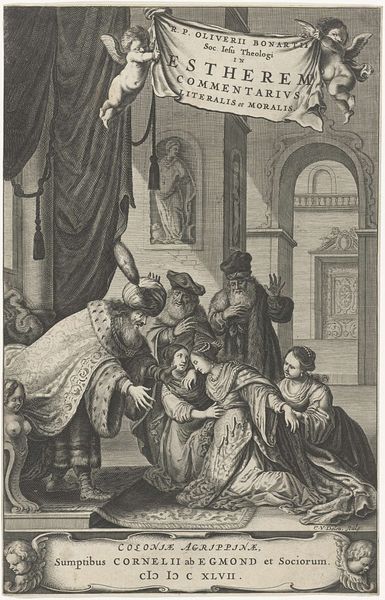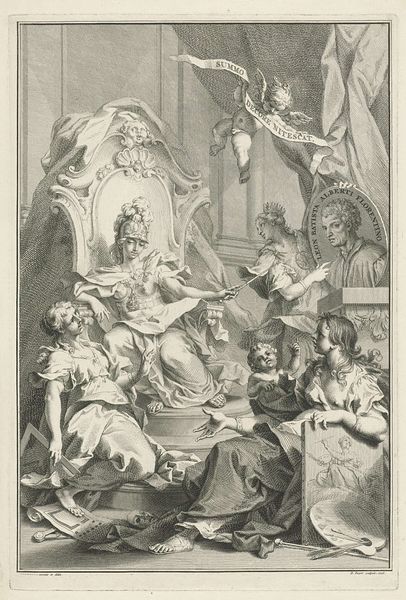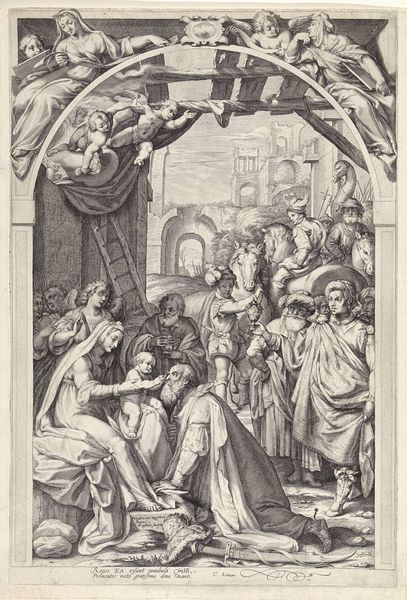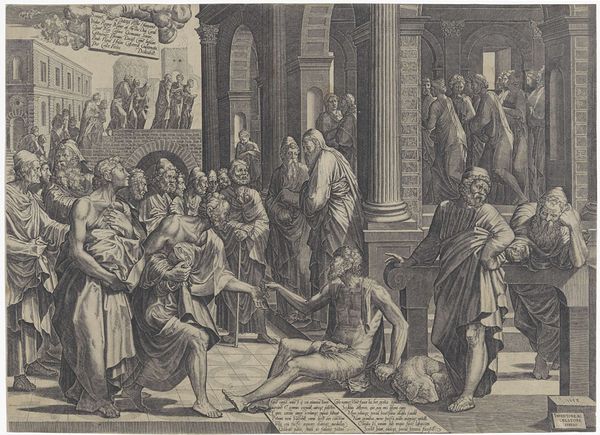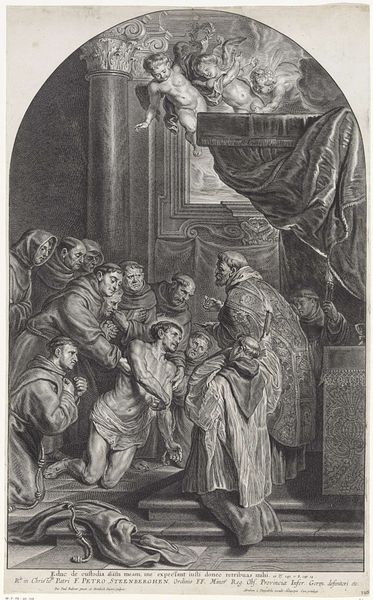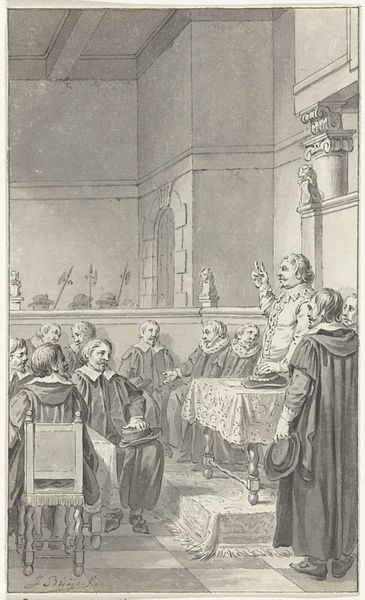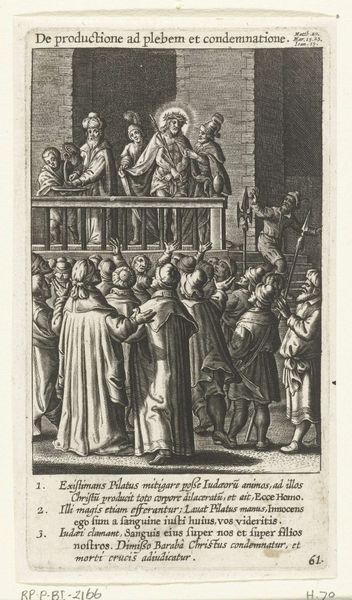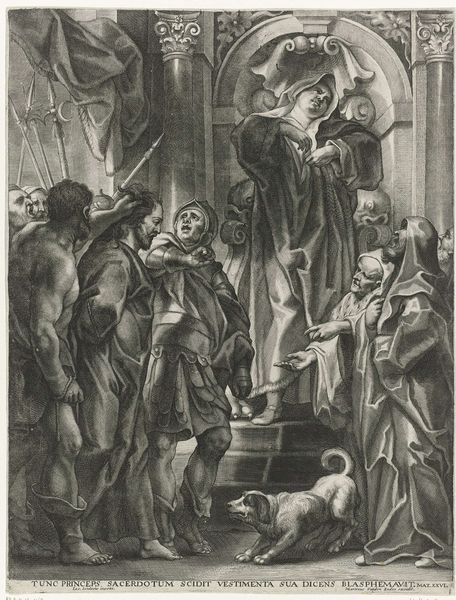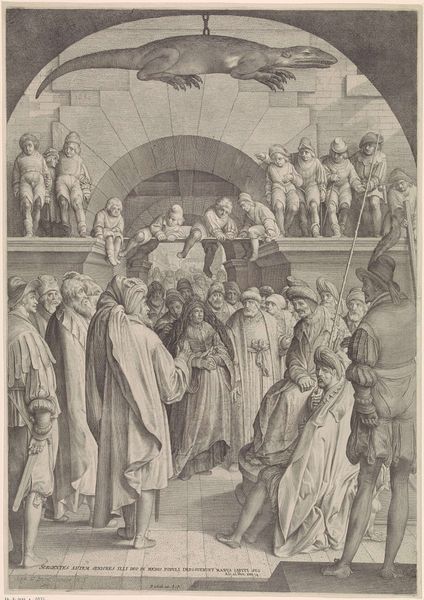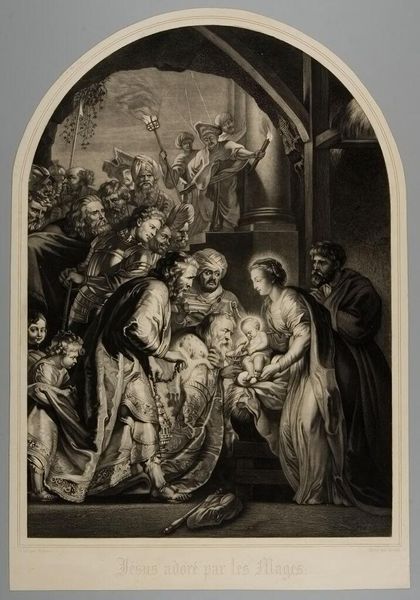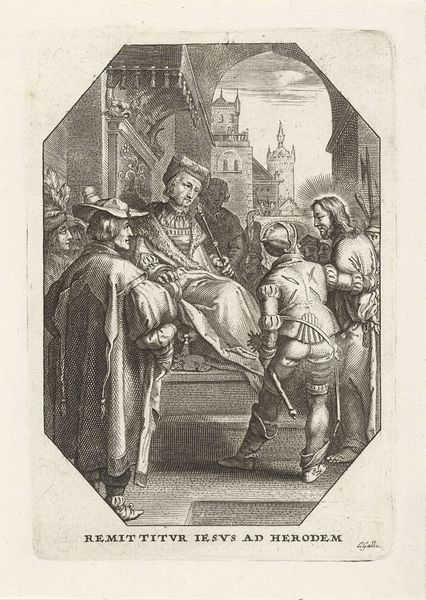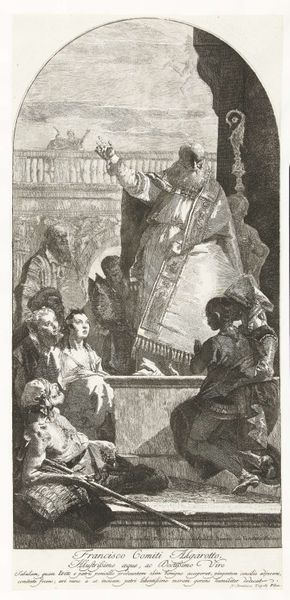
engraving
#
baroque
#
dutch-golden-age
#
old engraving style
#
figuration
#
history-painting
#
engraving
Dimensions: height 705 mm, width 480 mm
Copyright: Rijks Museum: Open Domain
Curator: Wow, this is a powerful piece. My first thought is, there is so much chaos within this scene. Editor: It truly is. This engraving, dating back to sometime between 1628 and 1670, depicts "H. Martinus geneest een bezetene," or Saint Martin healing a possessed man. It’s currently held in the Rijksmuseum. The printmaker here is Pieter de Jode the Younger. Curator: Possessed is the right word! Just look at the wild-eyed figure being restrained. It is almost sculptural, capturing the turmoil of that moment, don't you think? And Saint Martin up there in the alcove—he's like a judge observing the drama unfold below. The dichotomy really holds your gaze. Editor: It's definitely a study in contrasts. We see a fascinating glimpse into the sociopolitical views during the Dutch Golden Age. Prints like this one disseminated religious and moral narratives widely, but also showcased wealth and the powerful elite who served as patrons. Consider the composition, a mix of disarray, saintly order, dramatic Baroque flare, and precise detail to the architectural space, reflecting the worldviews of its audience. Curator: Absolutely. You almost get a sense that this domestic drama serves as a testament to both divine power and civic order. Also, can we appreciate the delicate touch for the figures? Every strand of hair, every straining muscle is etched into life! Editor: Right. And notice how the medium itself–engraving– lends to this air of authority and timelessness. There’s a permanence in the lined strokes, like a history literally etched in stone, meant to solidify a narrative of healing and perhaps to reinforce certain societal roles and hierarchies. Curator: It feels less like a gentle artwork, more like an emphatic public service announcement. It feels like it needs to shout the value of faith. Editor: And now the print serves as its own announcement of how history can alter our experience of imagery, wouldn't you agree? We find the politics in imagery, where our modern perspectives invite us to critique them and see this visual record from so long ago in new, thoughtful ways. Curator: Right. I entered this imagining the feeling of healing and divinity, but come away seeing something bigger and more constructed in the drama than before. Editor: Exactly. Art historical thinking shapes us and shows how perspectives evolve across eras.
Comments
No comments
Be the first to comment and join the conversation on the ultimate creative platform.
